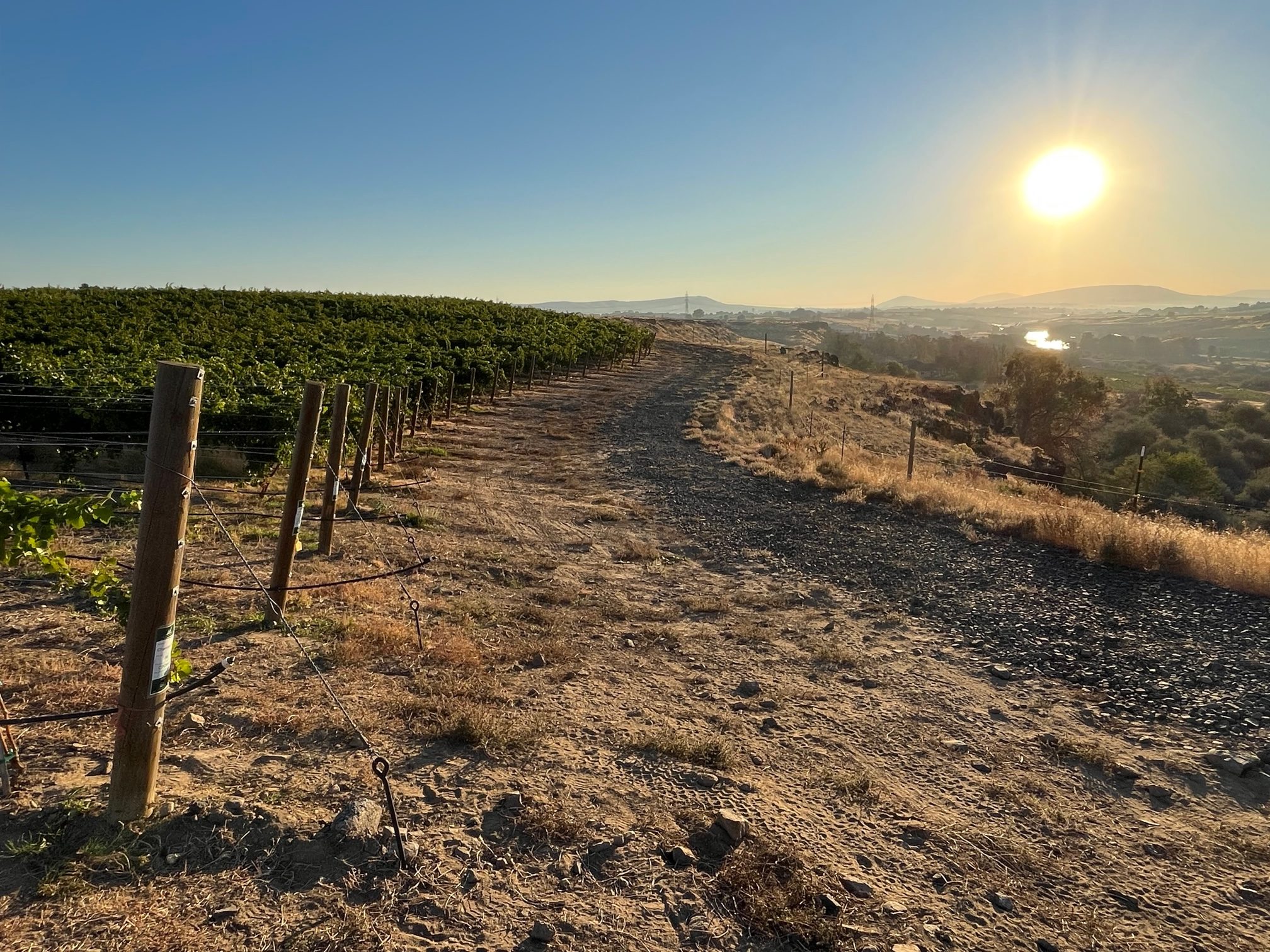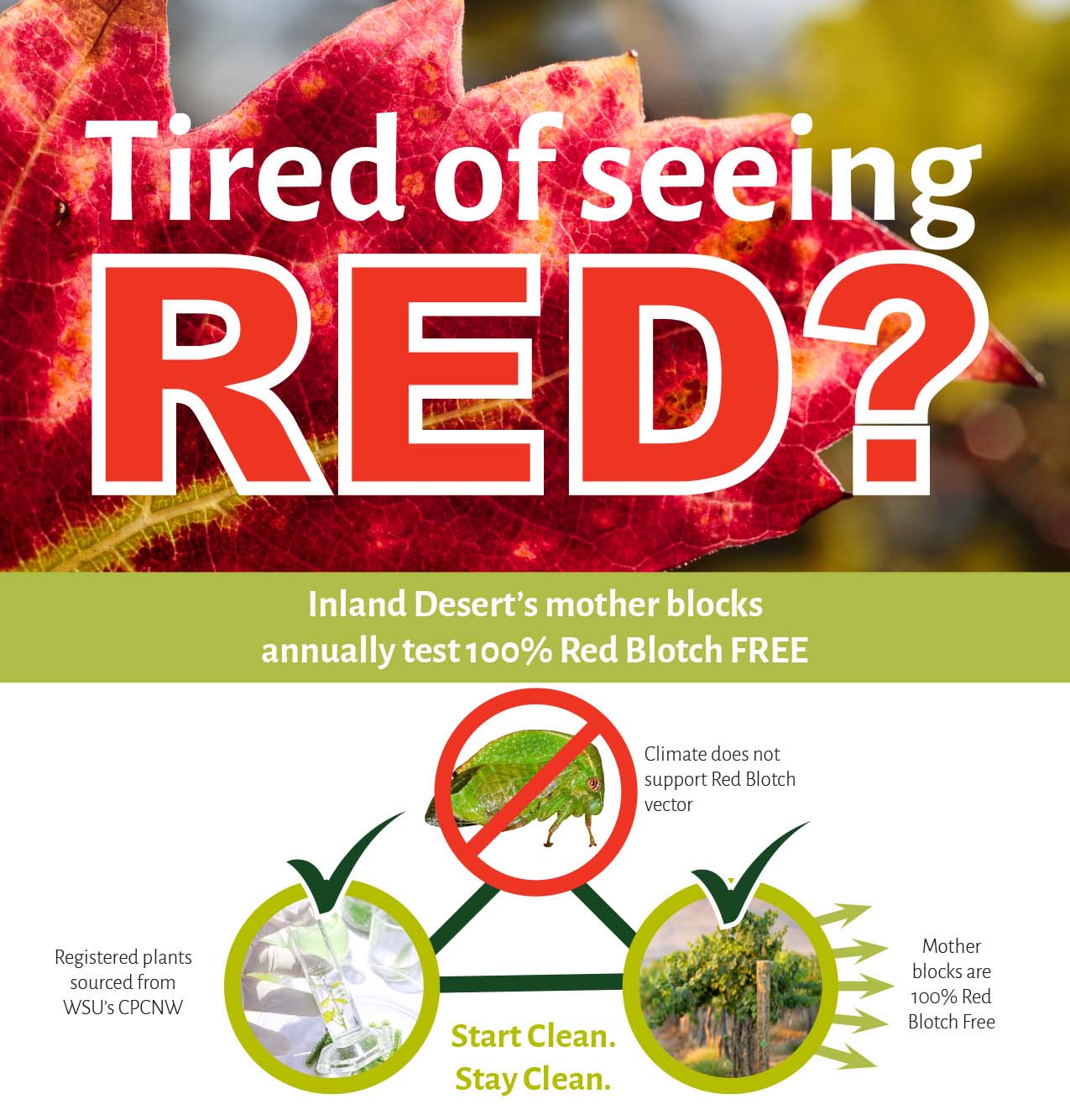
Our Location
days of sunshine
degree parallel
degree Diurnal Shift
Inches of Rainfall
hours of daylight
Our Location, Your Advantage
Located in the irrigated Columbia River Basin at just above 46˚ North Latitude in Washington State’s semi-arid interior, IDN enjoys hot dry summers and cold winters. Summers offer long days of sunshine for rapid plant growth, late fall frosts lead to optimal vine lignification, and cold winters ensure hard dormancy for grapevines and controlled pest populations. Precipitation is less than nine inches per year, occurs mainly between late fall and early spring.
Sustainable by Nature – Our geography eliminates the risk of most reinfection
Young Vine Decline (Petri Disease) Complex
Central Washington’s dry, desert climate is naturally very low in fungi, including fungal pathogens, that are responsible for several types of trunk diseases. This complex of diseases, often referred to as the Petri complex or Young Vine Decline organisms, are known to over time infect and plug vines’ xylem vessels, decrease fruit production, and result in a vineyard’s early demise. Sudden vine death, or apoplexy is also a possible symptom.
Trunk diseases are simply far less prevalent in Central Washington. This natural advantage, combined with IDN’s Mother Block management and production protocols make the likelihood of latent fungal infections in IDN’s vines far less likely than vines produced in wetter or more humid regions.
Pierce’s Disease (Xylella fastidiosa)
Cold winters eliminate the possibility of Pierce’s disease. This bacterium simply cannot survive Central Washington’s severe winters.
Crown Gall (Agrobacterium vitis)
Cold winter temperatures in Central Washington are far more likely to damage vine cambium and cause galling in Mother Blocks infected with Crown Gall. Such symptomatic plants, displaying galls, are judiciously and routinely rogued, thus reducing the pool of cuttings taken from Mother Blocks that harbor latent CG infections.
Note: A. vitis is not regulated by either Washington’s or California’s certification programs. Environmental conditions in California’s wine growing regions are generally too mild to give rise to galling. Because of this, the extent of CG infection in California mother blocks is virtually unknown.
No presence of Xiphenema index
Surveys of Central Washington soils reveal no incidence of Xiphenema index / Dagger Nematode, the only known vector of Fan Leaf Virus.
No presence or spread of Red Blotch virus / GRBaV
To date, there are no instances of spontaneous occurrences of Red Blotch Virus in Central Washington State. All recorded instances of Red Blotch Virus have been traced to importation from out of state. Furthermore, Red Blotch Virus, even when found in vineyards that were planted with imported vines containing the virus, does not spread here. The Three Cornered Alfalfa Hopper—the only identified vector for Red Blotch Virus—does not live or survive Central Washington’s continental climate.



